So far I have written about balancing poses which are done in a standing position – for example the Tree Pose or the Dancer Pose. Today’s post is about the Tiptoe balancing pose ( – Padangushthasana – पादाङ्गुष्ठासन, a balancing pose done from a squatting position. This is an intermediate level pose and it improves strength and flexibility in the toes, ankles, knees, hips and thighs.
When I first saw a picture of this pose on the cover of a yoga magazine, it looked like a deceptively simple pose. However, when I started practicing the pose, I realized that in addition to physical and mental balance, the pose requires strong toes and ankles as well as flexibility in the knees and hips. Like any other balancing pose, depending upon your physical and mental state at the time of practice, you may find it easier to balance on a given day as compared to other days.
Step-by-step
- Start by sitting in a squatting position. Lift the heels up and sit on your toes. Adjust the left heel so it is directly under the perineum.
- Place the right hand on the floor by the side of the right thigh for support. With the left hand lift the right foot up and place the top of the foot on the left thigh. The sole of the right foot should be facing up.
- Getting into this position is itself quite challenging for many beginning students. It requires flexibility in the toes, ankles, knees and hips. If you find it hard to place the foot on the opposite thigh, you may want to rest your back against a wall for support. Alternately, if you happen to be close to a pillar or a railing, you may hold on to the railing for support. The support will allow you to put the foot on top of the opposite thigh without losing balance and falling down.
- Once the right foot is in place on top of the thigh, you can place the left hand also on the floor on the side of the left thigh for additional support
- If you find that you are comfortable enough in this position, you may attempt to bring the palms together in a prayer position at the heart center. This is the final version of this balancing pose.
- Maintain the final pose for 6-8 breaths, if possible.
- Repeat the above steps on the other side.
Variation 1
In the final position of the above pose, you may like to dynamically move the knee up and down a few times, trying to bring the knee close to the floor with each movement. Finally, you can try to place the knee on the floor and maintain balance.
Variation 2
- Start by sitting in a squatting position. Lift the heels up and sit on your toes.
- Place the right hand on the floor by the side of the right thigh for support. With the left hand hold the big toe of the left foot and lift the foot up.
- While holding on to the big toe, try to stretch the leg out in front and straighten the knees. Make an effort to lift the leg higher.
- If you feel comfortable in this position, you may lift the right hand from the floor and place it on the right thigh for the full balancing pose.
- Maintain the final pose for 6-8 breaths, if possible.
- Repeat the above steps on the other side.
Benefits
- This asana helps maintain Brahmacharya (one of the five Niyamas in Patanjali’s Ashtanga Yoga)
- Helps keep the reproductive system healthy
- It remedies flat feet and improves strength and flexibility in the toes, ankles, knees, hips and thighs
- Improves physical balance, mental focus and concentration
Contraindications
People with existing pain in the knees, ankles or hips should not attempt this pose.
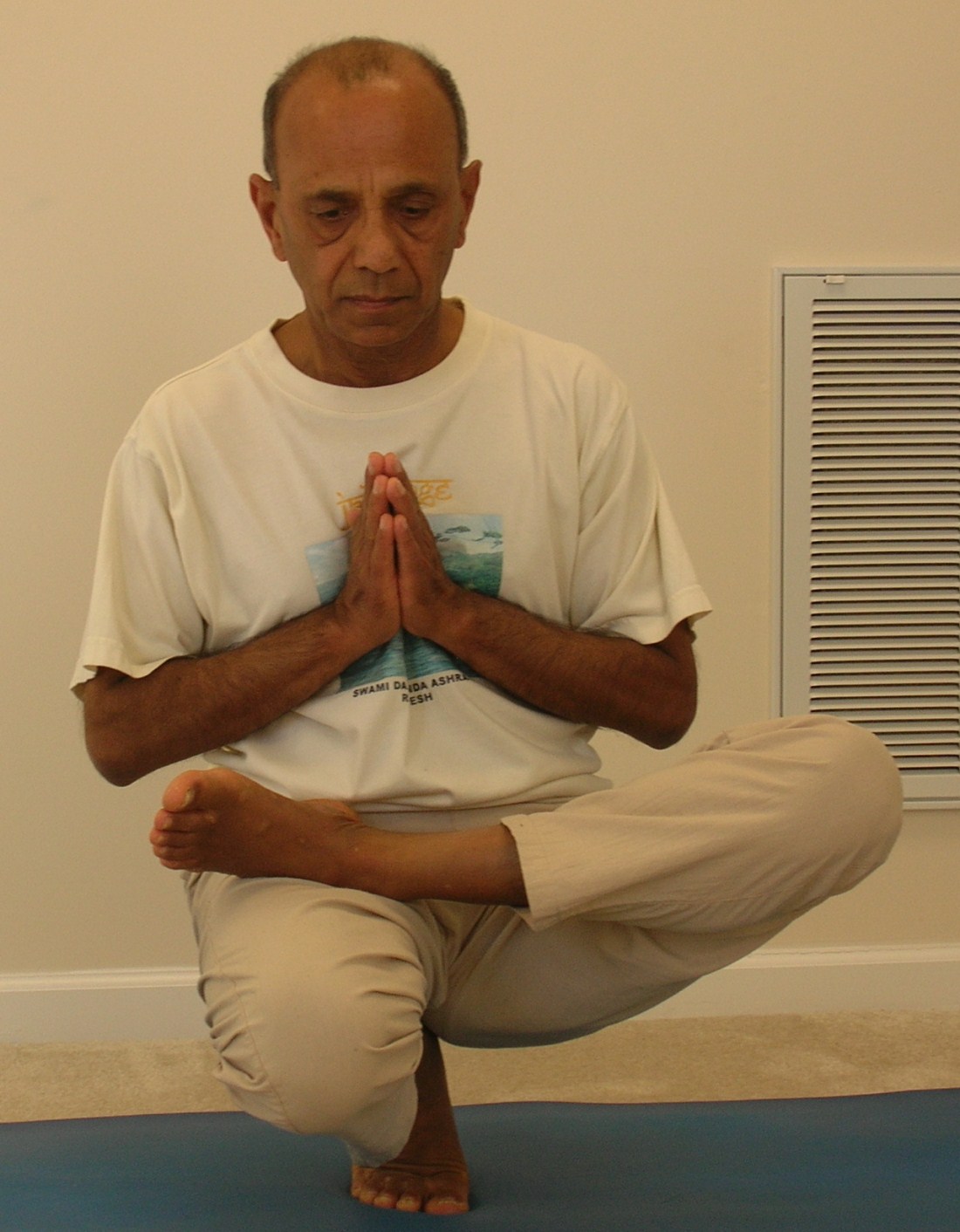
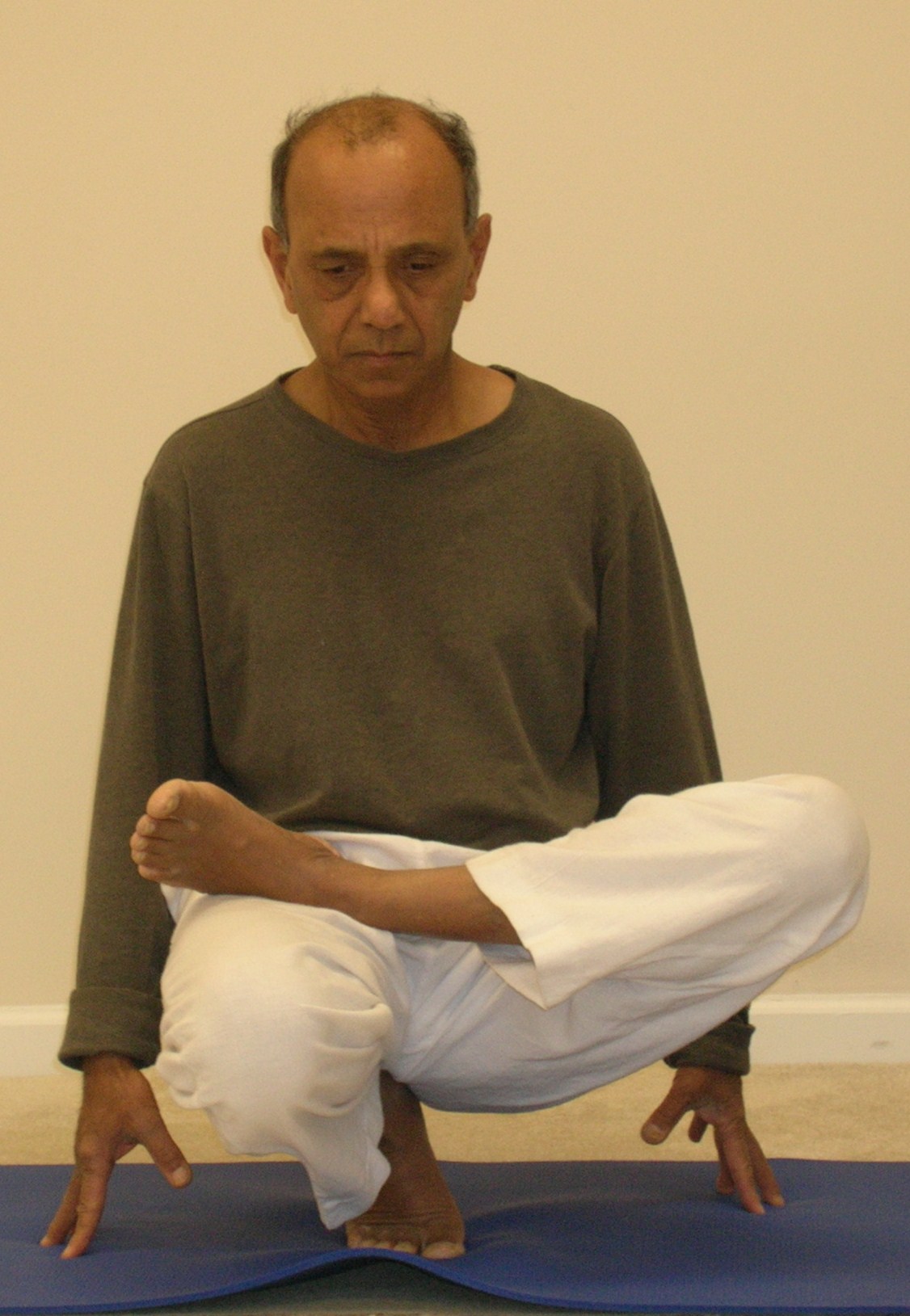
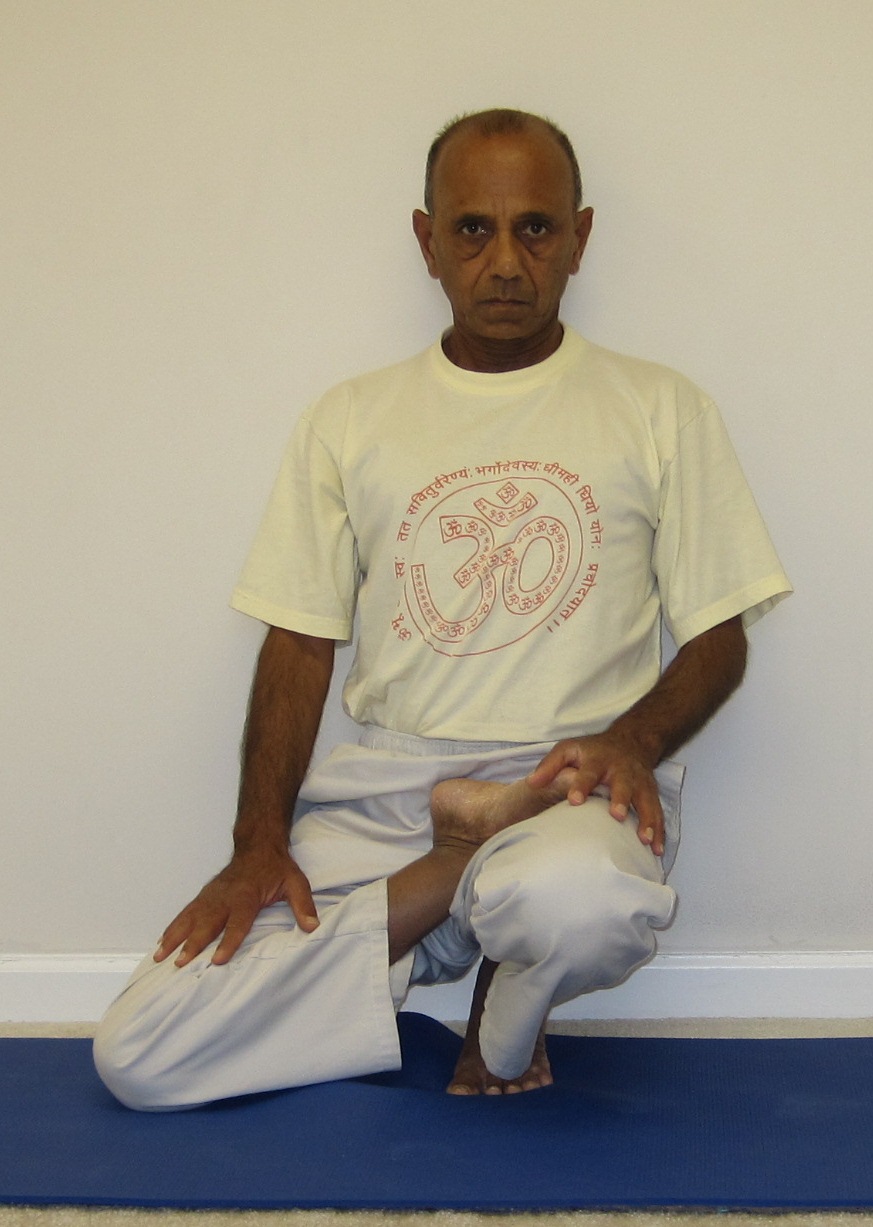
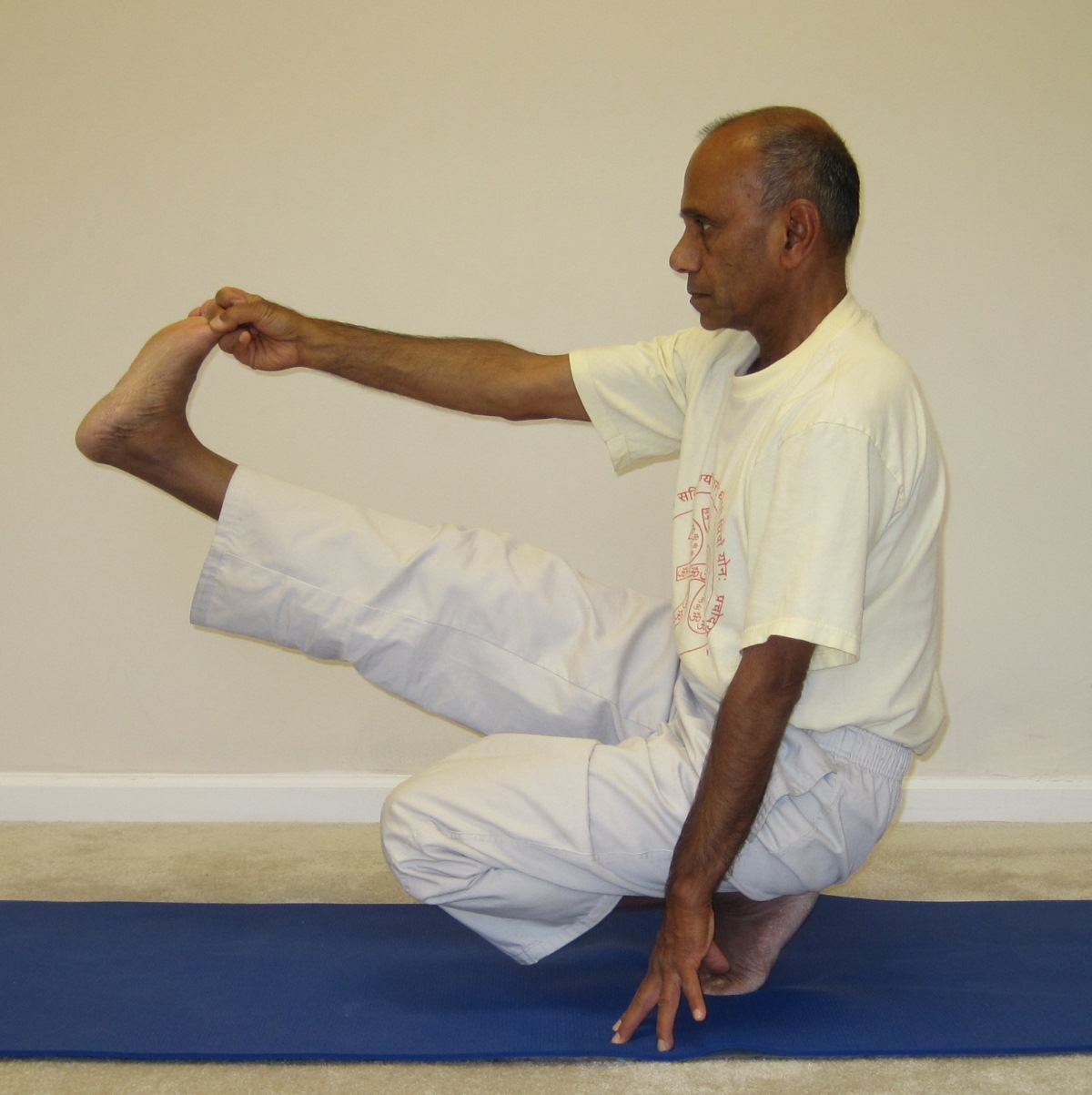
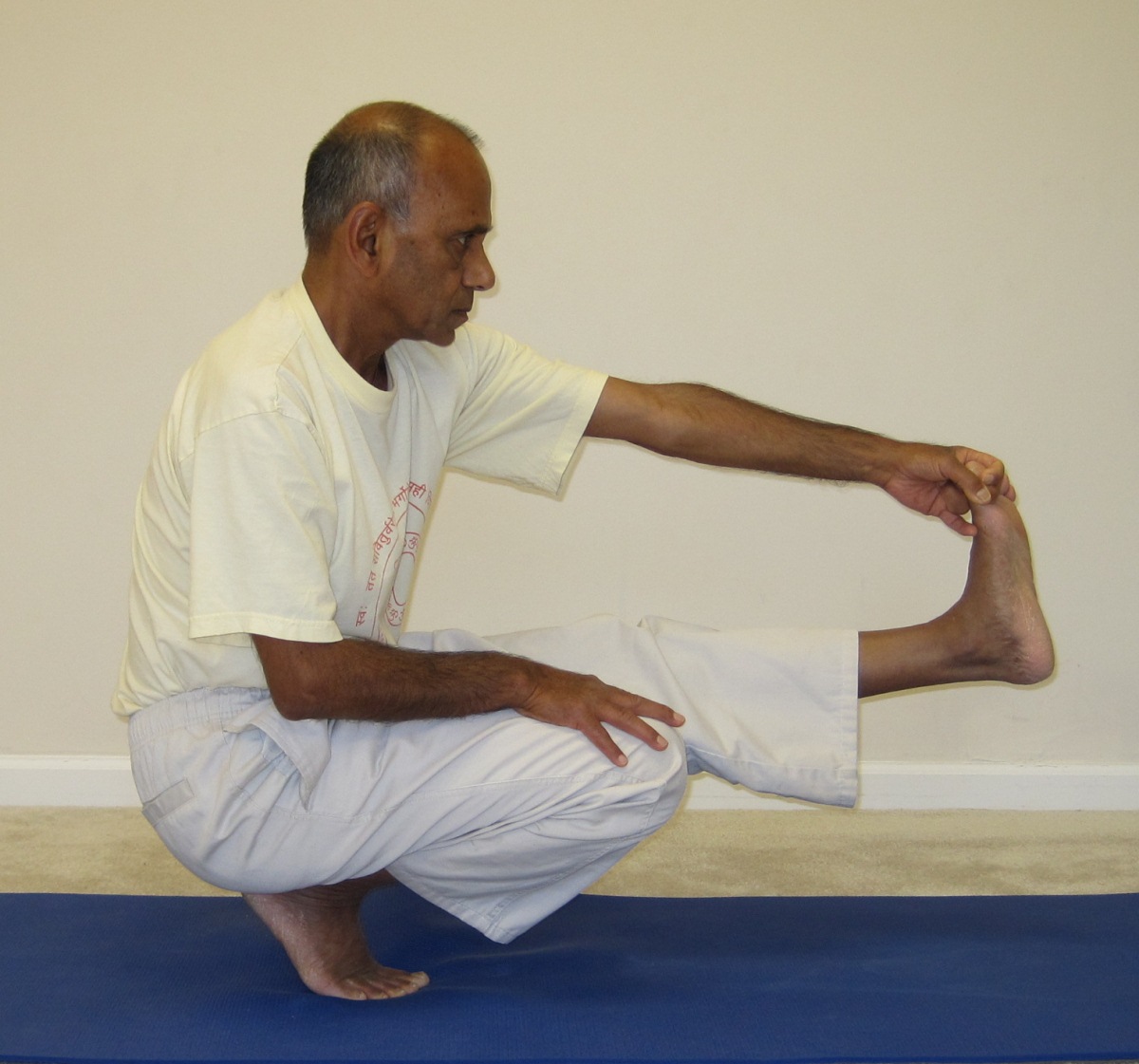
Any tips for this asana? It is just strength? I am fine to get the knee on thigh etc but I canNOt lift my fingertips off the earth and stay balanced on the ball of my foot. Will practice!
Dear Bethany, once you able to put your foot on the opposite thigh, then it is a matter of focus and balance rather than strength. I suggest that you start by resting your back against the wall while trying the pose. Fix your gaze at a spot on front and whenever possible release the support of the wall. Let me know how it goes. All the best.